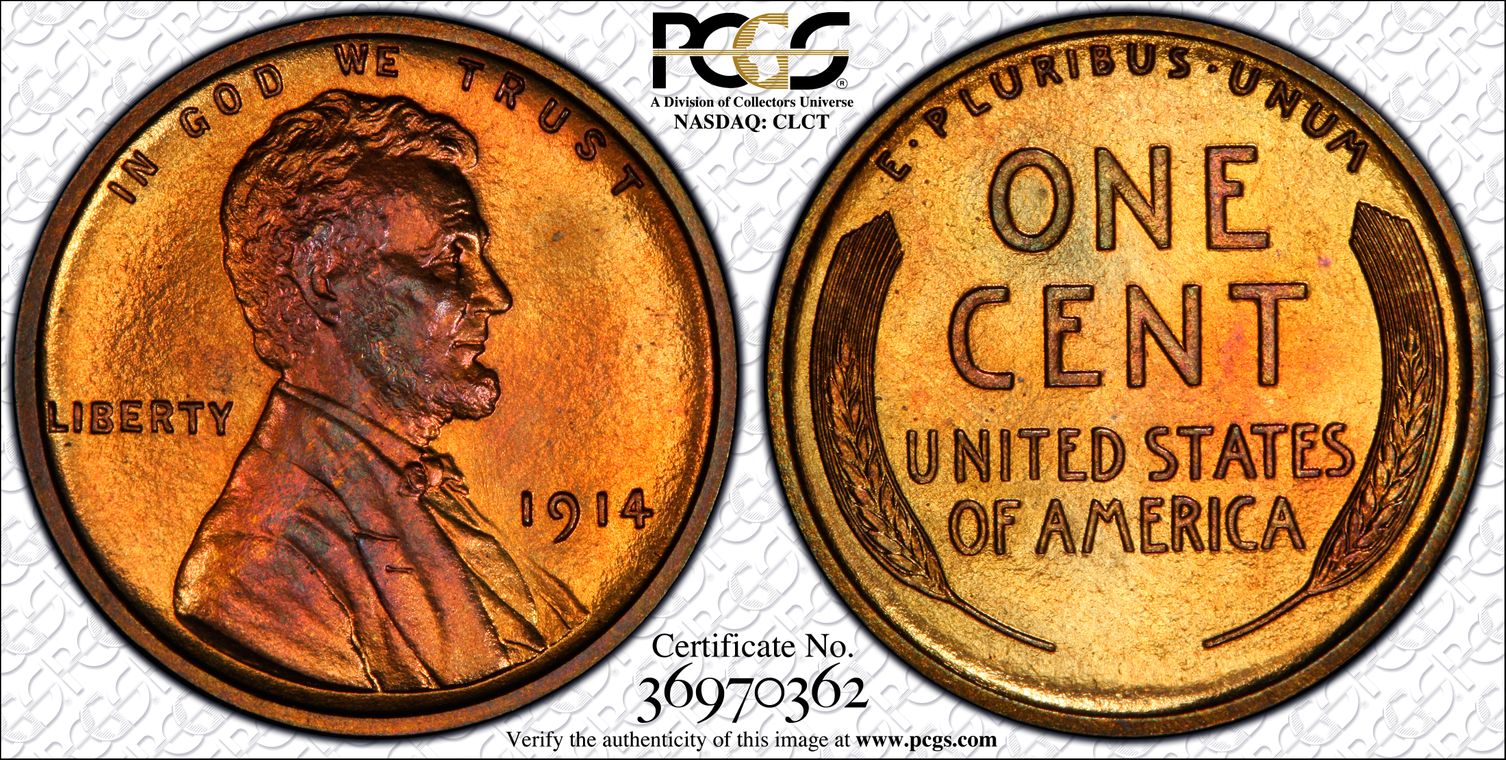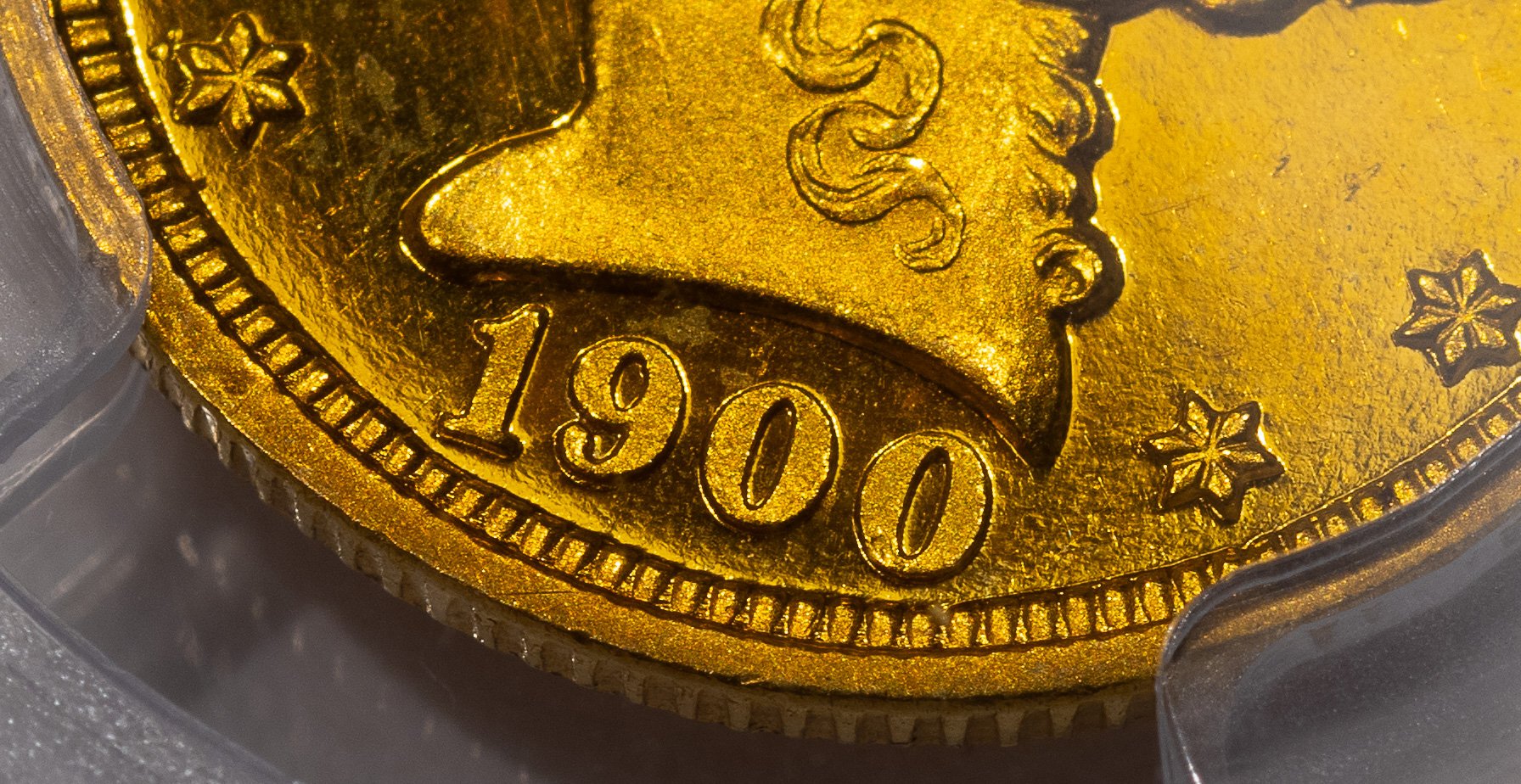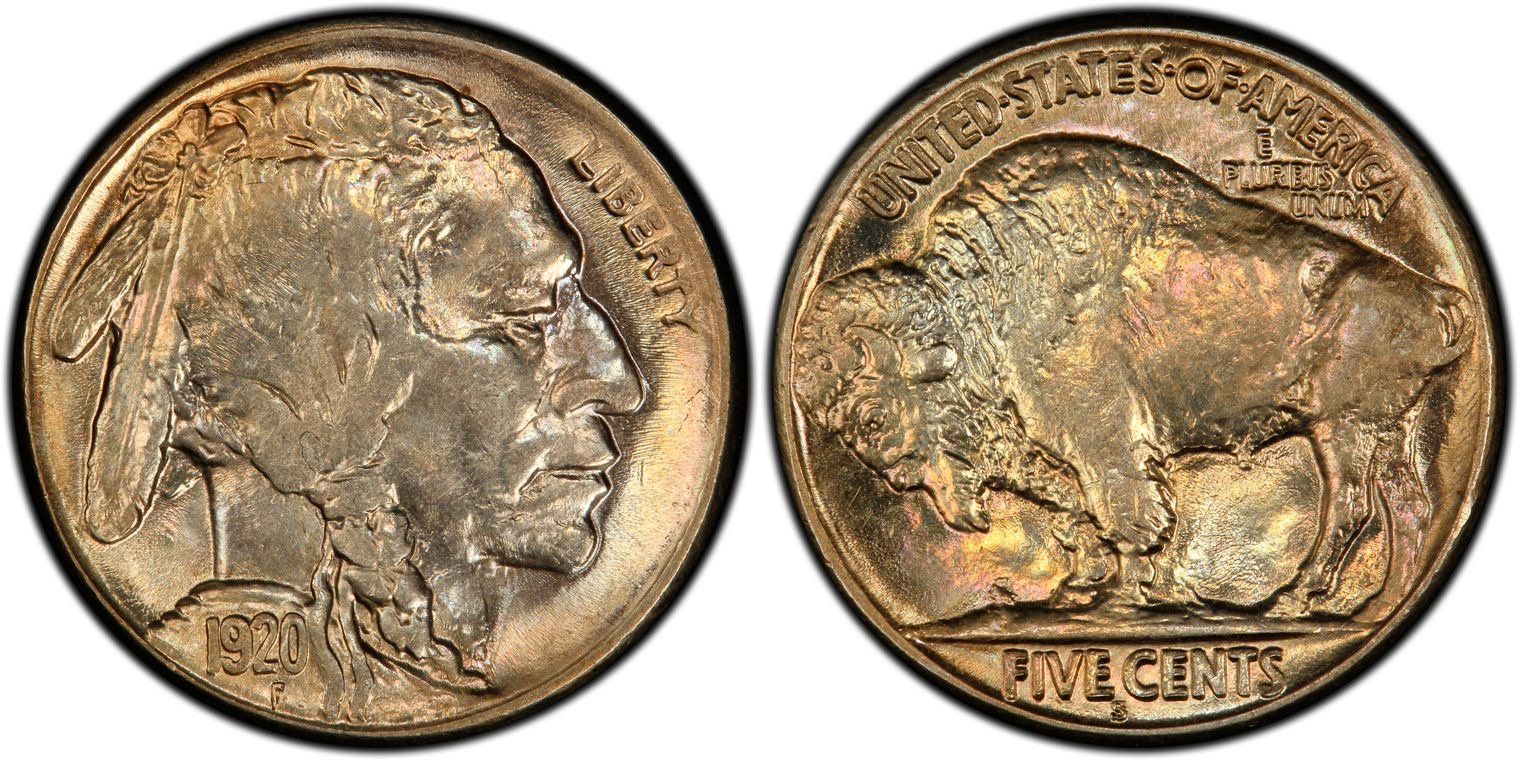"Orange Peel" Surfaces on Proofs
 FlyingAl
Posts: 4,209 ✭✭✭✭✭
FlyingAl
Posts: 4,209 ✭✭✭✭✭
Commonly seen on Proof Indian Cents and Liberty gold, "orange peel" surfaces are quite uncommon but can be highly attractive. There are generally two accepted stances on the topic, and the true cause is pretty debated.
The first (generally less accepted view) is that the effect is part of the die, causes by the wear and fatigue of the die as it strikes the coins. While "orange peel" is sometimes used to describe the true die wear - commonly referred to as "starburst" - the "orange peel" seen on Proof cents and gold is not the same. There are several problems with this theory - namely that we don't see the effect on nickel and silver, and that Proof dies were polished after annealing. The polishing should have removed all trace of the orange peel surface and reduced it to a uniform flat surface to our eyes. Additionally, if it was in the dies, silver and nickel would show the effect.
The second, more commonly accepted belief is that "orange peel" is caused by improper (too hot) annealing of the planchets before striking. Annealing at too high a temperature would cause the grains of the metal to expand and appear in a clump like look. Annealing furnaces at the mint were supposed to be set to different temperatures for each type of metal, but it is likely that this didn't happen. It is quite likely that during the factory work of the mint, when switching from nickel or silver (which are annealed at higher temperatures) the workers either didn't allow sufficient time to let the furnace cool (or didn't switch the temperatures) before switching metals to gold or copper. This also explains why we don't see the effect on nickel and silver - the temperatures were never incorrect (only too low).
The reason this effect is most commonly seen on Proofs is likely due to the fact that when angled correctly, the light hitting the surface of the mirrored fields simply reflects every change in surface height. The mirror surfaces on the Proofs are much smoother than what is commonly seen on Mint State coins, so it is likely the rougher surfaces of business dies eliminated the texture of the "orange peel" during striking.
Post your orange peel coins!


Comments
Interesting. I'm surprised no one has figured out what causes this surface before.
Since an orange peel surface is not seen (?) or extremely rare (?) on nickel or silver proofs do you think it has more to do with the gold or copper alloys because they are softer? Does orange peel appear on Platinum Proofs? That would blow my alloy theory. Additionally, I doubt that all gold proofs or Indian cents have orange peel surfaces. If that's correct, it is associated with certain dates - right? There must me something about what causes this effect to metal on the Internet that can be applied to our coins.
- Bob -

MPL's - Lincolns of Color
Central Valley Roosevelts
Different alloy temperatures likely cause the effect. If the furnace is too hot, you get the appearance being discussed.
Thanks but I don't believe in "likely" anything except I'm likely to die one day. I think your discussion will get us to the correct answer one day.
So the planchets are too hot or when the alloy is mixed it crystalizes when it cools? There are three different dates imaged so far. I'll bet only some of the coins for each of those dates show orange peel. So it has to do with the condition of the dies - right? Or is is a combination of things?
It could be any date or batch of planchets, provided the furnace is too hot. Yes, the grains of the metal rearrange into long grain structures that appear as the orange peel surface.
I used "likely" for the sake of completeness. Improper annealing is the only logical answer, and remember the dies are polished after annealing, so any orange peel caused on the dies is removed by such polishing.
Excuse the glare. Here are a few other dates. I think there is enough orange peel effect showing in some unglared areas.
Normally the effect becomes visible under certain lighting conditions
- Bob -

MPL's - Lincolns of Color
Central Valley Roosevelts
Bob, keep these awesome Indians coming! They're incredible!
A question for which I do not have an answer.
Were the planchets for 19th Century Proofs specially blanked, upset and then annealed before being burnished or polished, or did the Medal Department just pick out nice ones from the general production runs of planchets and polish them up?
If the latter then the annealings would have been normal.
I'll bet the old numismatists knew the answer and it has been lost. Anyway, I'm going to make it my project and so far what Al said makes sense. It is a result of something done to a BATCH of planchets. So more than one Batch was used for Proofs with large mintages. I looked and the 1874 and 1877 have the fewest Proofs (one batch of planchets?) Lets see one of those Proofs with orange peel.
What about these

https://pcgs.com/setregistry/showcase/2819
I would not call it "orange peel" as it is purple, etc.. Buyers go crazy when they are looking for these willing to pay way over Greysheet. I listed one on ebay and one dealer buyer played all kinds of games to get it for less.
This one I'd call "orange", not sure if it got the rd designation:
Just a hint of orange peel on these


- Bob -

MPL's - Lincolns of Color
Central Valley Roosevelts
Large grain size caused by metal forming and annealing temperature/cooling of industrial metals can result in the cosmetic orange peel effect. Grain size is controlled through a combination of cold rolling and annealing. Obtaining the desired grain size requires proper control of the amount of cold rolling, annealing temperature, annealing time, and cooling methods after annealing. Orange peel caused by not properly cooled after annealing, which allowed the grains at the surface to grow too large. "The annealing twin exhibits a hard-oriented component during the deformation; thus, it plays a role as a barrier and hinders the slipping of dislocation. As the strain accumulates, part of the annealing twins may protrude from the surface of the heat pipe, forming a large-scale fluctuation of the surface as the so-called “orange peel” morphology."
Not the best image, but gives you the gist. 1896 $5 proof.
DOG acolyte
Very interesting thread Alex!
>
So concerning gold Lib proofs?
There is one dealer, that in the past, has advertised proofs with this ‘orange peal’ surface as truly original coins. In other words if this surface isn’t noted, the coin has been ‘messed with.’
>
If I’m interpreting this thread right, that’s just not the case. Apparently, coins can have both types of surfaces and still be original, right?
Not the best pictures but something is going on with this surface.
Disclaimer: I'm not a dealer, trader, grader, investor or professional numismatist. I'm just a hobbyist. (To protect me but mostly you! 🤣 )
Oh, sorry! You were just asking for proofs. 🫣
Disclaimer: I'm not a dealer, trader, grader, investor or professional numismatist. I'm just a hobbyist. (To protect me but mostly you! 🤣 )
Yes, absolutely. A coin can also have orange peel and not be original as well.
@OAKSTAR - what is likely showing on that cent is bubbles on the plating over the zinc.
This is a fantastic example, thanks for posting!
Nice toning but the best part here is the double ear right?
This has a sort of orange peel look. Not a proof, but is designated PL by PCGS. From a 1994-D World Cup Commem. Graded MS69PL
- Bob -

MPL's - Lincolns of Color
Central Valley Roosevelts
Al, for your research and any potential publication, find pictures of two specimens of some low mintage 19th century Proof gold, same year and denomination, where you can prove that the pattern of the orange peel design is different on two specimens from the same die in essentially the same die state.
TD
Tom, I wish I could but at this point the availability of high grade Proof gold that I can image is pretty much zero, let alone finding two examples of the same date/denom.
Try the Heritage Auction pictures.
Been a while since I made this post, but here's a shot from a 1900 $2 1/2.

Thats a pretty cool effect. Can this occur on regular strikes also like a Morgan or is it restricted to just proofs?
Student of numismatics and collector of Morgan dollars
Successful BST transactions with: Namvet Justindan Mattniss RWW olah_in_MA
Dantheman984 Toyz4geo SurfinxHI greencopper RWW bigjpst bretsan MWallace logger7 JWP
I'd imagine it's seen on MS coins as well, but the flow lines hide the effect in the surface disruption. It's seen a bit easier on mirror proofs because of the polished surfaces and extra pressure.
Interesting
Student of numismatics and collector of Morgan dollars
Successful BST transactions with: Namvet Justindan Mattniss RWW olah_in_MA
Dantheman984 Toyz4geo SurfinxHI greencopper RWW bigjpst bretsan MWallace logger7 JWP
It’s common in many business strike buffalos. I never minded the look but a number of Buffalo hunters would avoid such examples. Look at the obverse fields here:
"Look up, old boy, and see what you get." -William Bonney.
That looks like die wear instead of orange peel to me.
Al,
In business strike coins, it is usually worn dies that cause the orange peel effect. There are a number of threads about this I believe ( although I am terrible at searching for old threads).
"Look up, old boy, and see what you get." -William Bonney.
I believe that is something different than what we're discussing (see my OP).
That is Amazing!!!